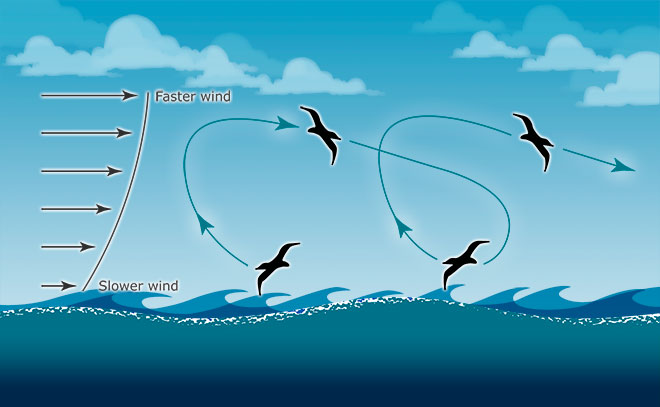
Albatrosses typically fly in a series of broad ellipses, each loop taking them closer to where they intend to go. The technique is known as dynamic soaring. First they point into the wind to gain lift, then they turn to coast downhill with the wind behind them. With the speed they build up they can glide for a short distance, even against the wind. This is made easier by the fact that wind speed is slower close to the water because of friction, so there is less resistance. When the albatrosses run out of height and momentum they point back into the wind to gain height for another loop. They also get lift from the upward pressure created by waves.
Te whakamahi i tēnei tūemi
Te Ara – The Encyclopedia of New Zealand
This item has been provided for private study purposes (such as school projects, family and local history research) and any published reproduction (print or electronic) may infringe copyright law. It is the responsibility of the user of any material to obtain clearance from the copyright holder.
Source: T. Alerstam, Bird migration. Cambridge: Cambridge University Press, 1990, p. 420







Tāpiritia te tākupu hou